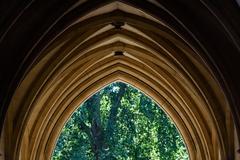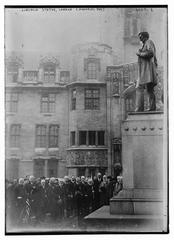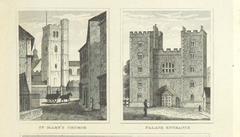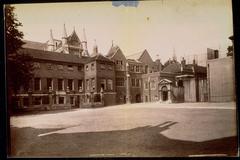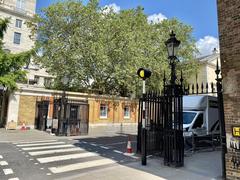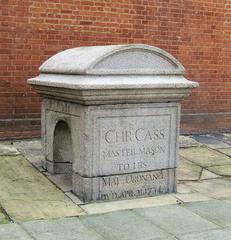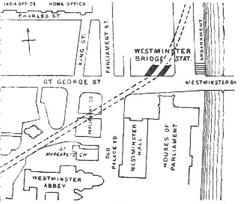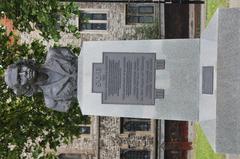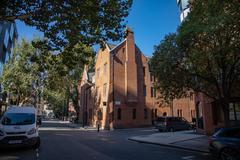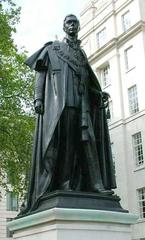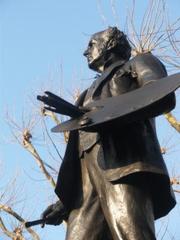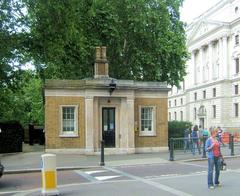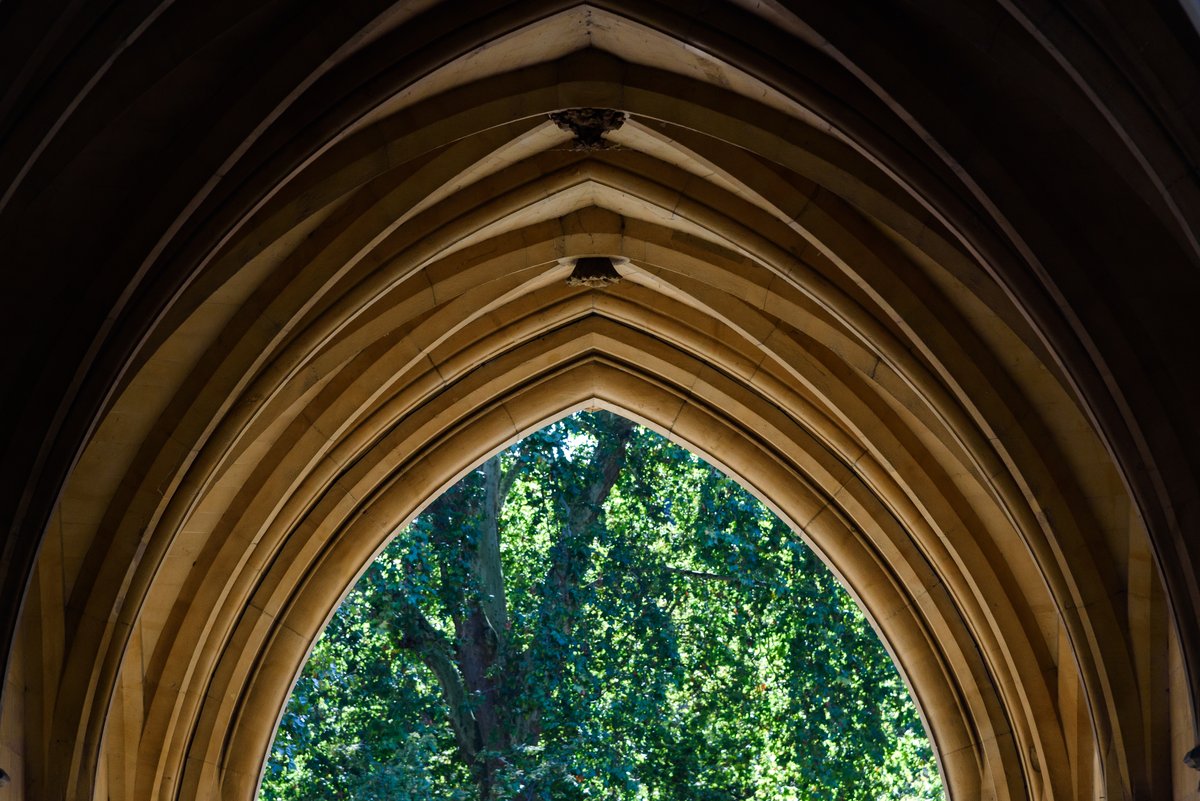
Westminster School Headmaster'S House
Westminster School Headmaster’s House, Kingston Upon Thames: Visiting Hours, Tickets, and Historical Overview
Date: 14/06/2025
Introduction
Westminster School stands as one of the UK’s oldest and most prestigious educational institutions, with a lineage dating back to its medieval origins. Central to its rich narrative is the Headmaster’s House—a Grade I listed residence in London’s 18 Dean’s Yard—serving both as the private home and symbolic heart of the school’s leadership. While not regularly open to the public, the Headmaster’s House offers a compelling window into centuries of academic excellence, royal tradition, and architectural grandeur. This guide details the historical significance of the building, visitor access, practical information, and its broader connection to Kingston upon Thames and royal heritage (Westminster School Official Website; Londonist).
Contents
- Early Foundations and Medieval Origins
- Elizabethan Refoundation and Royal Patronage
- Architectural Heritage of the Headmaster’s House
- Academic Influence and National Role
- Traditions, Symbolism, and Daily Life
- Preservation and Public Engagement
- Visiting Information: Hours, Tickets, and Access
- Connections to Kingston Upon Thames and Royal Heritage
- Notable Events and Visitor Tips
- FAQ
- Conclusion and Further Reading
Early Foundations and Medieval Origins
Westminster School’s story begins with the Benedictine monks of Westminster Abbey, who were educating boys as early as the 12th century. The earliest official record appears in 1179, when Pope Alexander III granted the Abbey the right to educate 40 poor scholars—a tradition establishing deep-rooted religious and academic ties (Westminster School Official Website). These medieval origins firmly anchored the school’s identity within the Abbey precincts.
The dissolution of the monasteries under Henry VIII threatened the school’s existence, but Queen Elizabeth I’s 1560 royal charter refounded it, initiating its modern era and cementing its reputation as a preeminent educational institution (Westminster School).
The Elizabethan Refoundation and Royal Patronage
Elizabeth I’s refoundation in 1560 transformed Westminster into a “Royal Foundation,” establishing a new set of statutes and a formal structure. The school’s primary mission was to provide a classical education to 40 King’s Scholars, selected via competitive examination. These scholars were given free board and tuition and were housed in “College.”
This royal connection extended to academia: Westminster became a feeder for leading universities like Trinity College, Cambridge, and Christ Church, Oxford, a system still honored today (Westminster School).
Architectural Heritage: The Headmaster’s House
The Headmaster’s House is a focal point within Westminster School’s historic campus, located at 18 Dean’s Yard. The house, dating mainly from the 18th century with earlier elements, is a Grade I listed building—testament to its architectural significance (Mapcarta). Its blend of Tudor and later English styles, brickwork, mullioned windows, and period interiors underscore its historical resonance.
Dean’s Yard, where the house stands, is a quadrangle surrounded by the Abbey and other historic buildings, forming the school’s communal heart (Westminster School Visitor Information). The house’s interior holds portraits, period furnishings, and artifacts, most notably the Busby Throne—a gift from Charles II to Dr. Richard Busby, one of the school’s most legendary headmasters (Westminster School: The Crown and Westminster).
Academic Influence and National Role
Westminster School’s rigorous curriculum and commitment to classical studies have produced generations of distinguished alumni, including philosopher John Locke, architect Sir Christopher Wren, and poet John Dryden. The school’s influence extends well beyond academia, shaping British culture and public life. Its location—adjacent to the Houses of Parliament and Westminster Abbey—has placed it at the heart of national events for centuries, from royal coronations to political upheavals (Westminster School).
Traditions, Symbolism, and Daily Life
The Headmaster’s House is a living symbol of leadership and continuity. It has hosted countless ceremonial events, including the annual Election Dinner and the Pancake Greaze on Shrove Tuesday—traditions that link present-day scholars with centuries of history (Westminster School).
Dr. Richard Busby’s legendary tenure (1638–1695) exemplifies the house’s role in shaping school culture and values. His refusal to doff his hat before King Charles II and the resulting Busby Throne remain emblematic of the headmaster’s authority and the school’s independence.
Preservation and Public Engagement
As a Grade I listed building, the Headmaster’s House is protected under strict conservation regulations. Westminster School works with heritage bodies to ensure its maintenance and continued relevance (Westminster School Visitor Information). The school also opens its heritage to the public through guided tours, open days, and educational programs. Booking in advance is required, and visitor numbers are limited for security and preservation.
Visiting Information: Hours, Tickets, and Access
Visiting Hours and Tickets
- Tours: Primarily available during school holidays or on designated open days.
- Hours: Typically weekdays, 10:00 AM to 4:00 PM—subject to change.
- Tickets: Often free but must be booked in advance due to capacity and security (Westminster School Visitor Info). Some special tours may carry a small fee.
Access
- Location: 18 Dean’s Yard, London SW1P 3RA.
- Transport: Nearest Underground stations are Westminster and St James’s Park.
- Security: All visitors must check in at the School Office with photo ID. Entry is only by appointment or during official events.
- Accessibility: Step-free access is available to most public areas, though some heritage interiors may have limitations. Contact the school for specific needs.
Restrictions
- Photography: Limited or prohibited in certain areas, especially inside the Headmaster’s House.
- Conduct: Visitors must follow all guidelines, maintain quiet in academic zones, and show respect for privacy.
Connections to Kingston Upon Thames and Royal Heritage
Though Westminster School is based in central London, its heritage resonates in Kingston upon Thames—a town renowned for royal coronations and historical links to the monarchy (The Daily English; BBC Travel). Kingston’s Coronation Stone, All Saints Church, and proximity to Hampton Court Palace complement Westminster’s narrative of royal patronage and elite education (Kingston Heritage).
Notable Events and Visitor Tips
- Election Dinner: Annual celebration of academic excellence.
- Pancake Greaze: Shrove Tuesday tradition.
- Royal Visits: The Headmaster’s House has hosted members of the Royal Family, reinforcing its symbolic role (Westminster School: The Crown and Westminster).
- Visitor Tips: Book tours early, bring photo ID, confirm accessibility if needed, and combine your visit with other London landmarks.
Frequently Asked Questions (FAQ)
Q: Can the public visit the Headmaster’s House?
A: Access is mainly by guided tour during open days or special events; interior visits are rare.
Q: Are there entry fees?
A: Most tours are free, but booking in advance is essential.
Q: Is the campus accessible?
A: Step-free access in most public areas; some interiors may be less accessible. Contact the school for details.
Q: Can I take photos?
A: Photography is limited, especially inside private or heritage areas.
Q: How do I get there?
A: Nearest Tube stations are Westminster and St James’s Park; public transport is recommended.
Conclusion
The Westminster School Headmaster’s House stands as a testament to centuries of educational achievement, royal association, and architectural heritage. Though its status as a private residence limits public access, guided tours and special events provide rare opportunities to experience its history. Combined with the school’s broader traditions and connections to Kingston upon Thames, a visit offers an enriching glimpse into Britain’s educational and royal past. For the latest visiting information, always check the Westminster School website.
For an enhanced experience, download the Audiala app for audio guides, stay updated via social media, and explore related historical sites in London and Kingston.
References and Further Reading
- Westminster School Official Website (Westminster School Official Website)
- Londonist, The Secrets of Westminster School (Londonist)
- Westminster School: The Crown and Westminster (Westminster School: The Crown and Westminster)
- BBC Travel, Kingston upon Thames: London’s Town of Kings and Queens (BBC Travel)
- The Daily English, Kingston upon Thames History (The Daily English)
- Westminster School Visitor Information (Westminster School Visitor Information)
- Kingston Heritage (Kingston Heritage)
